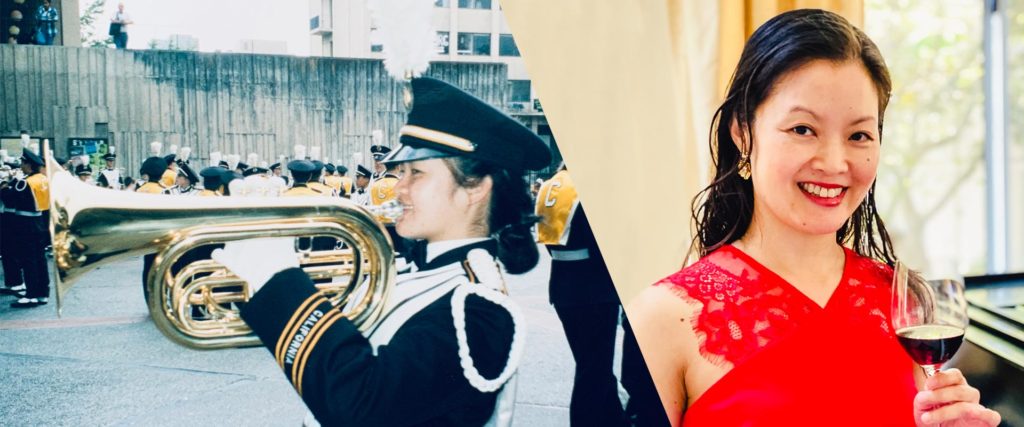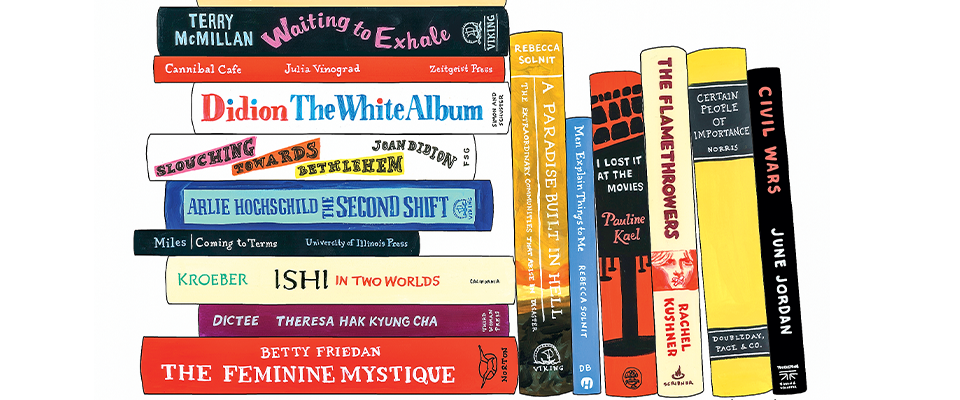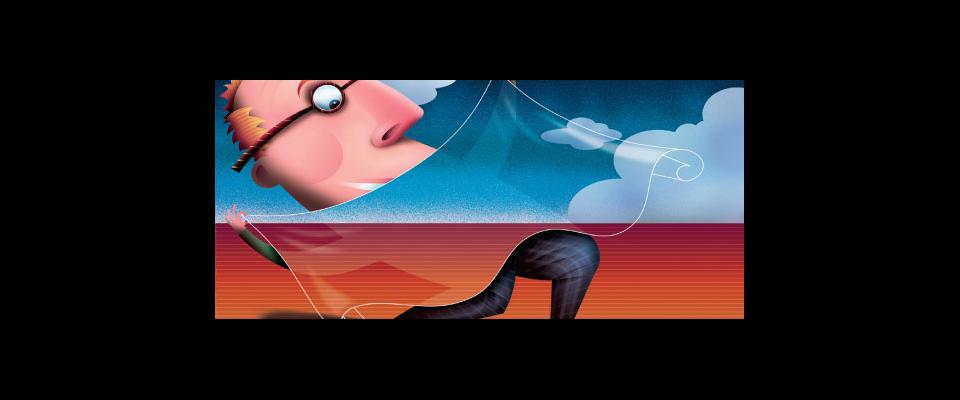Feminism has come roaring back, from the recent popular vote to pussy hats and other forms of protest. And so have its opponents. Whether happenstance or part of the Zeitgeist, Counterpoint Press last fall reissued a feminist classic, Woman and Nature: The Roaring Inside Her. Written by Susan Griffin and originally published in 1978, the book traces the fallout from Western culture’s artificial division between spirit and matter. The Berkeley-based poet, essayist, and playwright employed an unusual prose form in this, her first full-length book, blending a passive-voiced history of scientific investigation with women’s received notions of status and social roles. It makes for a startling juxtaposition that some describe as collage-like. Woman and Nature, now in its third edition, has sold more than 100,000 copies.
UC Berkeley professor Carolyn Merchant is one of many critics who credit Woman and Nature with launching ecofeminism, a theory and movement that ties together exploitation of the natural world with oppression against women, people of color, children, and the poor. Merchant, who teaches in the College of Natural Resources, remembers discussing these ideas with Griffin in the 1970s, as they sat together in her living room.

“Susan’s book was the first in the United States to articulate fully the connections that had been emerging in France with the Françoise d’Eaubonne’s 1974 Feminism or Death,” says Merchant. Ecofeminism’s other literary forerunners include Rachel Carson’s Silent Spring and Mary Daly’s Beyond God the Father and Gyn/ecology. (Daly’s tribute to Griffin’s work has remained on Woman and Nature’s back cover from the original Harper & Row release, through the 2000 Sierra Club reissue, and now Counterpoint’s edition.)
Griffin’s work says Merchant, “initiated a wave of ecofeminist writings and movements in the United States that poured forth in the 1980s and spread around the world.” Merchant invited Griffin to give guest lectures to her undergraduates in the ’80s. Cal students continue to examine Griffin’s writing, incorporating chapters from Woman and Nature in the student-led DeCal classes (Democratic Education at Cal) on ecofeminism that Merchant regularly sponsors. And Griffin is also writing the forward to a new anthology to be published next spring by Routledge, After the Death of Nature: Carolyn Merchant and the Future of Human-Nature Relations.
Clearly, Griffin’s work has grown more relevant with age, unlike some voices that emerged during feminism’s second wave. (Google “essentialist feminism” if you’re inclined to know more.) Perhaps that’s because ecofeminism itself has become more urgent, moving in step with the public’s understanding of climate change and ever-newsworthy environmental disasters, such as BP’s oil spills in the Gulf Coast and the nuclear reactor meltdown at Fukushima. The feminist, nonexploitive orientation to the Earth as expressed in Woman and Nature (and amplified by a new generation of activist writers including Rebecca Solnit, Bill McKibben, Barry Lopez, and Terry Tempest Williams) points to root causes and deep solutions, as opposed to fighting each battle as they appear on an overwhelming number of fronts.
It was not surprising, then, to see a diverse, standing-room-only crowd of women and men pack Kaleidoscope Café in Point Richmond to hear Griffin read from Woman and Nature on a Friday night in late January. Griffin stood to the side of café’s small wooden stage, holding her copy of Woman and Nature erupting with yellow Post-it notes as she waited for the evening’s co-host, novelist Elizabeth Rosner, to introduce her.

“Forty years ago, this book expressed so many ideas that seem painfully relevant today,” said Rosner who, like many in the room, had just returned from the Washington, D.C. Women’s March. “This is a book that asked, what is a voice for? And how do you balance voice versus action, or action versus reflection? Susan,” she concluded, “is going to tell us what to do.”
Griffin, resplendent in a purple tunic setting off her snow-white hair, acknowledged the applause and heartfelt murmurs passing through the crowd. “I much prefer this book not feel so… timely, if you know what I mean,” she began.
In response to Rosner’s comments, Griffin selected two sections to read aloud. The first, from her new preface, addressed the role of political action. “In some academic circles, political action has been frowned upon, as if of necessity participating in any movement corrupts the clarity of thought.” Leaning into the microphone, Griffin looked at the crowd and spoke crisply. “But in my experience the actual process of change is far more complicated … joining a strike or protest can open the mind to new ideas, and conversely, a constant flow of new ideas and perspectives is critical to any effective movement for change.”
Next, Griffin read from the chapter, “Timber: What Was There For Him,” which alternates product descriptions of trees drawn from lumber industry pamphlets with employment guidelines for working women. It remains a surprising, even humorous mash-up that could be enacted onstage. Merchant, in fact, has used this section in her classes, assigning students the roles of secretary and forester as they describe how the forest must be neat and orderly, just as the successful secretary organizes the office and does not talk back.
After the reading, the audience mingled in the café, some ordering coffee and tea while others waited for Griffin to sign their books. Among them was Oakland resident Elizabeth Miller who remembers discovering the book at her college’s Women’s Center at the State University of New York, Oswego, in 1980. “There’s nothing dated about this book,” Miller says. “Anything that opens your eyes or broadens your horizons will always stay with you.” She paused, leafing slowly through the book’s pages. “On the other hand, an older reader like myself could learn we haven’t changed as much as one would hope.”
Penning New Visions
Griffin, who was born in Los Angeles in 1943 and traveling north to San Francisco State to earn a B.A. in 1965 and M.A. in 1973, has long employed a prose style, often described as “collage,” that merges memoir, poetry, and research to examine ecology, politics, and feminism. She’s taught at UC Berkeley, Stanford University, and California Institute of Integral Studies as an adjunct professor. But Griffin is more of a classic belles-lettres professional whose work is centered on publishing. She has edited multiple anthologies and written 21 books, encompassing nonfiction, works of poetry, plays, and a screenplay, the 1990 documentary, Berkeley in the Sixties.

The Utne Reader, a respected quarterly, named Griffin one of “100 Visionaries For the New Millennium” because her work, they wrote, “is a network of meaning in which everything illuminates everything else.” Griffin’s 1992 book, A Chorus of Stones: The Private Life of War, was a Pulitzer Prize and National Book Critics finalist in nonfiction. The National Endowment for the Arts and the Guggenheim Foundation have awarded the author with grants and fellowships. Last year, Griffin received the Fred Cody Award for Lifetime Achievement from the Northern California Book Reviewers Association.
Fellow Counterpoint writer Elizabeth Rosner, author of Electric City and two other novels, says that she read Woman and Nature last year to prepare for Griffin’s book launch event. “I had already swooned over A Chorus of Stones,” Rosner says. Searching online to prepare for her onstage conversation, she adds, “I could see that Susan’s following was special. We all have readers who resonate with our work. But hers were devoted. People described that book as changing their lives.”
“Griffin experiments with form, using passive voice or adding poetry as a way to bring silenced voices forward while demonstrating how and why these voices were silenced,” says Rosner.
Sustaining the Work
To learn more about Griffin’s process, I arranged to meet the writer at her North Berkeley home. Entering through the enclosed garden, Griffin walked me through rooms whose every wall was filled with books and artwork. Among her recent projects are a completed novel, The Ice Dancers Tale, a long prose poem about the Mississippi River, and a new work of about politics, Strong Men: Postcards from the Present.
She offers a cup of tea as we sit in her kitchen and return to the genesis of Woman and Nature. Griffin recalled the summertime joys, as a young girl, of swimming in the Pacific and camping in the High Sierras. “Still, it became clear to me in 1974 while teaching a class at SF State in women’s literature,” she says, “that women had a different relationship to nature than men. I saw that women were presumed to have an immediate, direct connection. We were embedded, as if we are nature’s intimate partners.”
“Just as Eve supposedly brings sin and death into the world, the movement wanted to deflect the whole problem onto women who are already scapegoated and marginalized.”
Such status was not viewed with respect. “My generation,” she explains, “was focused on Civil Rights, free speech, and anti-war protests.” As Griffin makes clear in the book’s new preface, early environmentalists such as Berkeley’s Kay Kerr (wife of Clark Kerr, former President of the University of California), Sylvia McLaughlin, and Esther Gulick organized the nonprofit Save the Bay in 1961. Their efforts prevented San Francisco from turning its bay into a narrow shipping lane. Despite their success, these women were not viewed as heroes. “We saw them as little old ladies in tennis shoes,” she admits.
Reading Thomas Kuhn’s 1962 classic, The Structure of Scientific Revolutions, was another spark, moving Griffin to study the history of science. Beginning with Plato, she sought to understand how those ideas shaped our understanding of nature. “That’s why it took four years to write the book,” she says. That reading led to research on witch burnings and the supportive role played by the era’s leading scientists, including Francis Bacon and William Harvey. “Being of a philosophical cast of mind, I began to wonder,” says Griffin. “What other premises are at work here?”
Another inspiration came from a speaking invitation from the Agricultural Department at UC Berkeley (now part of the College of Natural Resources). Griffin, who was widely known for her articles in Ramparts magazine and other journalistic outlets, was asked to give a talk on ecology and feminism. Griffin delivered a lecture that drew on insights from the Bible’s story of original sin and her personal experience of a male friend shaming her for driving a car rather than riding a bike. “Now, the main source of our problem is not from households but from corporations. But just as Eve supposedly brings sin and death into the world, the movement wanted to deflect the whole problem onto women who are already scapegoated and marginalized.”

Griffin clarifies, “I don’t blame individual men. That’s useless. The real issue is gender. It is the oldest, major organizing system of our civilization. It erases authenticity and real experience. It leaves a profound imprint on all of us.”
Have we made progress in the 40 years since Woman and Nature first saw print?
“Yes,” Griffin replies. “In terms of consciousness, there’s been an enormous amount of change. I look at my granddaughter. She is majoring in the same UC Berkeley department where I gave my first talk. She will not face the amount of prejudice in her work life that I did. Sexism is now an illegal, actionable category of behavior. True, these ideas haven’t reached every part of this country. But after this election, so many people came up to me, quoting a line from Woman and Nature, saying how it affected their lives or changed their thinking forever. I know the work is not done. But knowing the book continues to resonate is very satisfying.”
You can hear Susan Griffin in conversation with environmental activist Joanna Macy at the Bay Area Book Festival, June 3–4, speaking on the literature of social change. Details about the talk will be released on the book festival’s site on April 15.
Barbara Tannenbaum is a journalist and fiction writer based in San Rafael, CA. Her pieces on arts and culture have appeared in The New York Times, San Francisco Magazine, The Los Angeles Times, Daily Beast, and Salon.com.





















